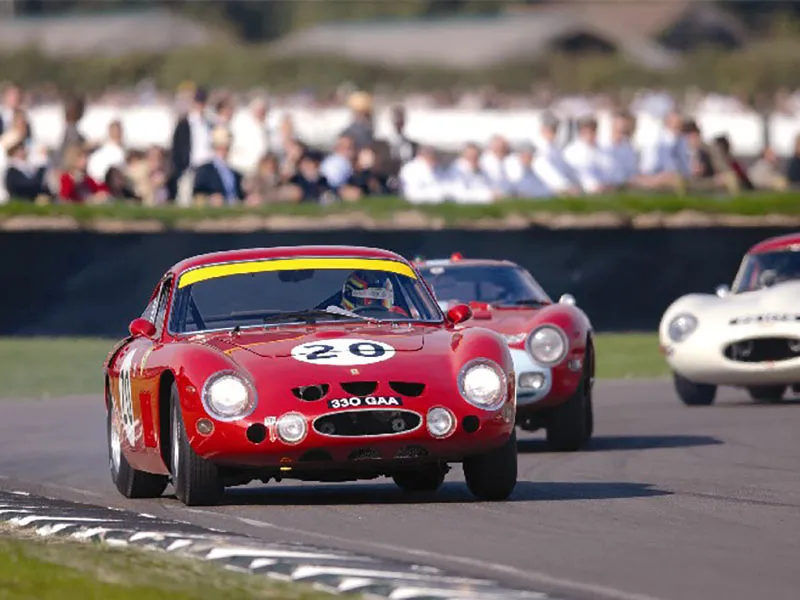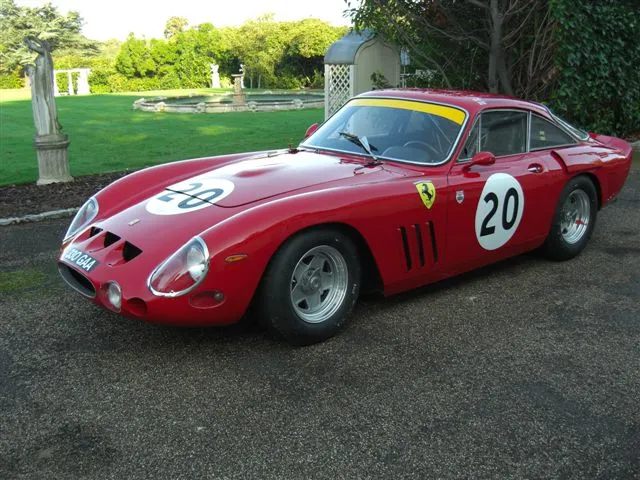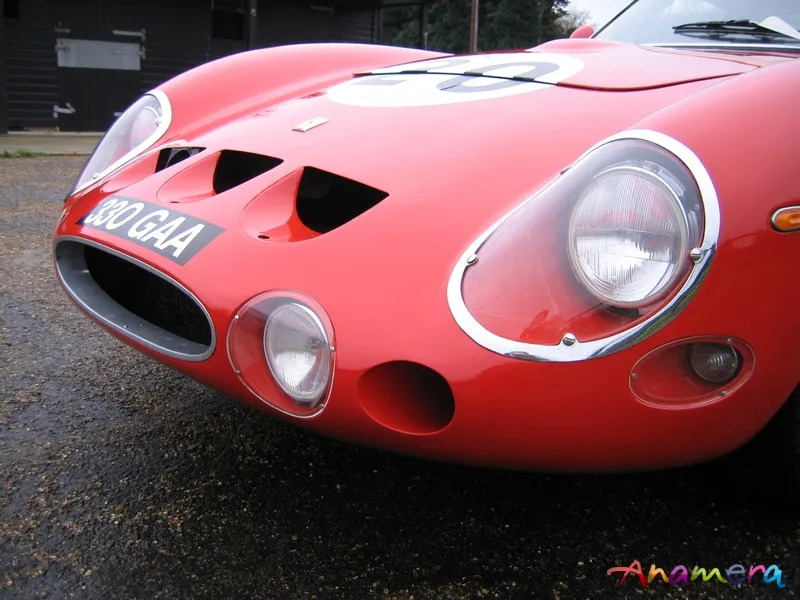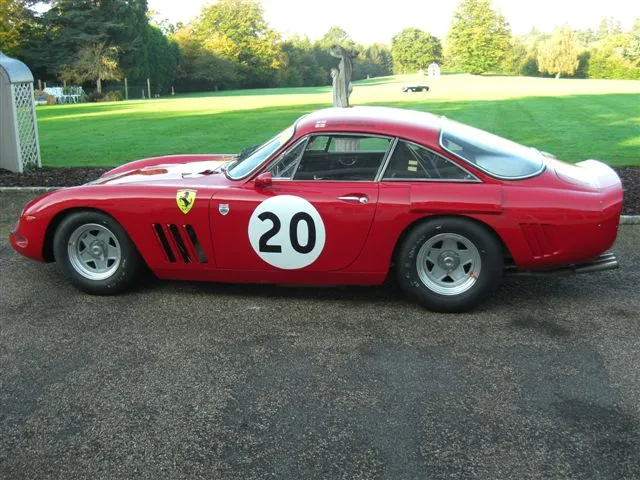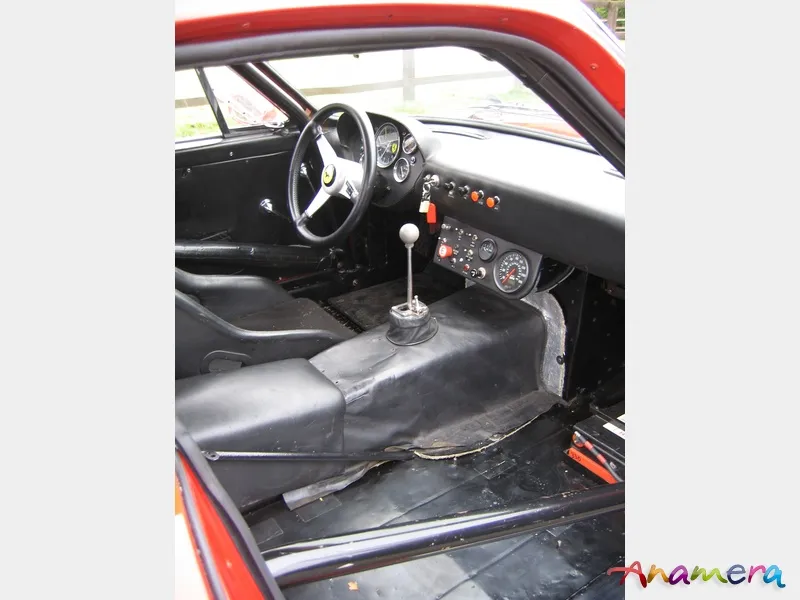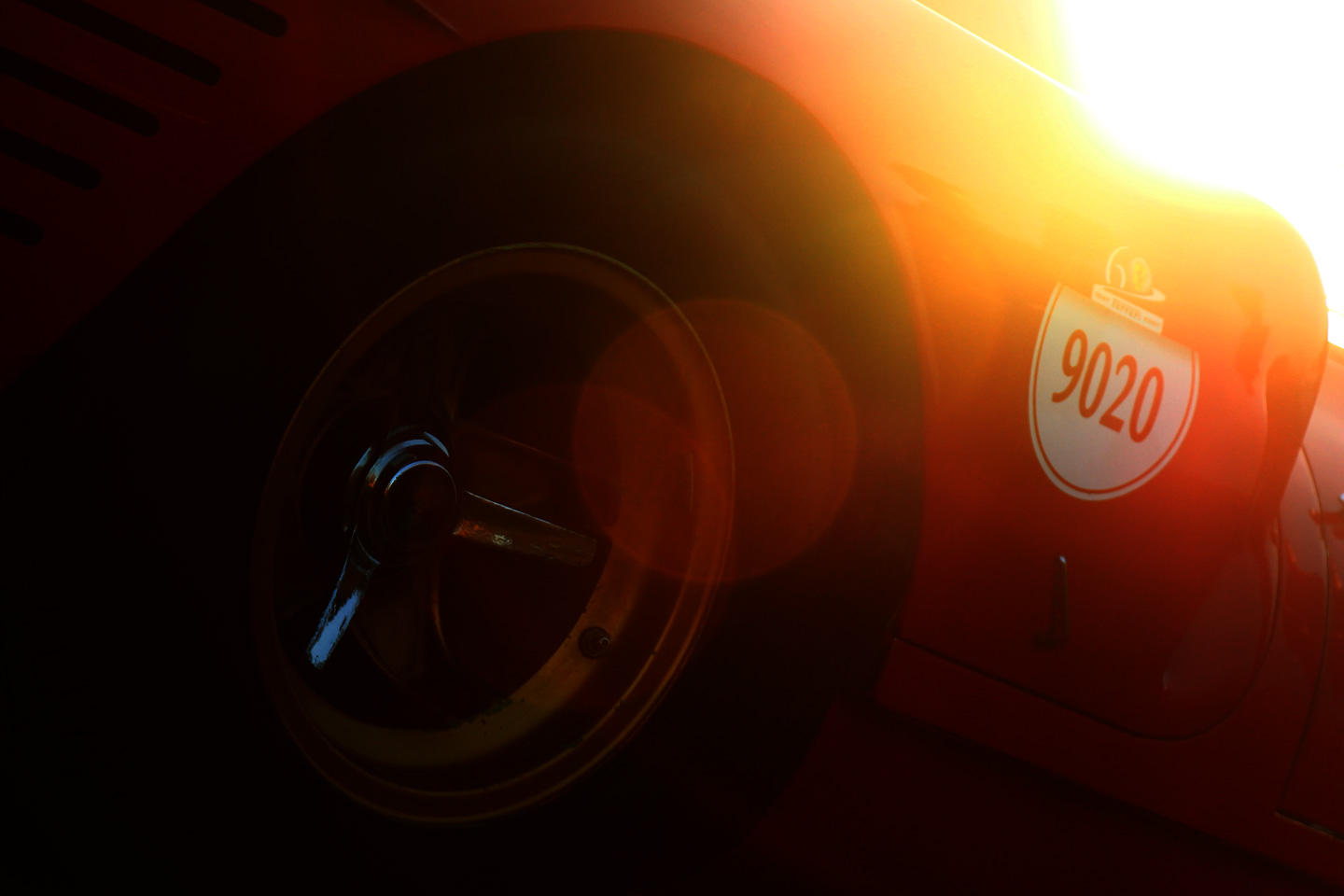One of only three race examples built, this 330 Le Mans Berlinetta is in exceptional condition and won this year’s Goodwood TT race.
The 330LMB was created to compete in the famous Le Mans 24-hour endurance race and the model made a brief, one-off appearance at the 1963 event. This is a time when competition activities at Ferrari were probably the most prolific and exciting. The design and engineering developments, made necessary by changes in the FIA regulations, around this period were most interesting and they created some of the most wonderful Ferrari racing cars ever produced. The Grand Prix cars of the day were in transition form front to rear engines and the sports racing cars were also soon to adopt the re-location of the power unit. In the meantime a final series of front engined V12 sports cars was being developed, which were later to become the most sought after and valuable Ferraris ever made. They were the 250 GTOs and among the derivates were the 330 LMB models.
The 330 LMB was the product of the determination and driving force of Mike Parkes, an engineer and racing driver that so impressed Enzo Ferrari, he offered Parkes the opportunity to be production development engineer and also a place in the SEFAC-Ferrari works team. Parkes was therefore able to design, build and race a car to his own specifications.
For the 1962 Le Mans race an experimental category was introduced to increase the variety of cars. It was argued the sports cars had become highly expensive, thinly disguised Grand Prix cars and did not resemble anything that the man in the street could buy. The GT category was therefore seen as necessary. Their idea obviously worked because the race attracted a fabulous array of cars included fifteen Ferraris.
Enzo Ferrari capitalised on this opportunity to give his distinguished Testa Rossas a new lease of life and a car based on the TR1/61 was prepared. The car was also significant in that it allowed the manufacturer to establish the new, Testa Rossa derived, 3,967cc power unit that had been conceived in 1960. The engine was based on the 400 SA pro9duction block and fitted with the SOHC Testa Rossa heads and TR inlet system, dry sump and machined conrods. The 390bhp unit was fitted with six carbs and mated to a five speed gearbox.
The Hybrid car, chassis number 0808, was the last sports racing Ferrari with a front mounted engine. It was designated as the 330LM Experimental although, according to different sources, it was also known as the TR1 330LM or 330 TR. The new engine proved toe be extremely effective because the SEFAC-Ferrari entered car was driven to victory by Phil Hill and Olivier Gendebien.
Antoehr, more recognisable, 4-litre development car accoumpanied 0808 in the same race. The new engine was installed in a 250 GTO which ran together with 0808 until Mike Parkes parked it in the sand trap at Mulsanne on the first lap and later retired due to over heating. The prototype 330LM is often referred to as the 330 GTO and is distinguishable from other GTOs in having a large hump in the bonnet.
Due to speculation with regards to potential changes to the regulations for the GT prototypes category in 1962, Enzo Ferrari prepared two examples of the cars in intended to run for the 1963 race and unveiled them at the Monza press conference in March; the open 250P rear engined 3litre V12 closed coupe and the 330 LMB. There were three definitive 330 LMBs constructed for the Le Mans in 1963. They included the car offered (#4381).
Mike Parkes ran 4381 at the Le Mans trials in April when he set the second fastest time, recording 187 mph on the Mulsanne straight. This put the car in the record books as being the first car to attain 300km/h at Le Mans.
4381 survived the race for eight hours and was in 26th place until all oil was lost due to a loose filter.
This car is exceptionally rare and an important piece of history.
